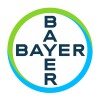
Eastman
Founded in 1920, Eastman is a global specialty materials company that produces a broad range of products found in items people use every day. With the purpose of enhancing the quality of life in a material way, Eastman works with customers to deliver innovative products and solutions while maintaining a commitment to safety and sustainability. The company’s innovation-driven growth model takes advantage of world-class technology platforms, deep customer engagement, and differentiated application development to grow its leading positions in attractive end markets such as transportation, building and construction, and consumables. As a globally inclusive company, Eastman employs approximately 14,000 people around the world and serves customers in more than 100 countries. The company had 2024 revenue of approximately $9.4 billion and is headquartered in Kingsport, Tennessee, USA.






